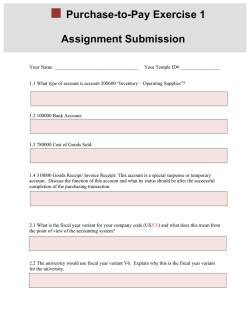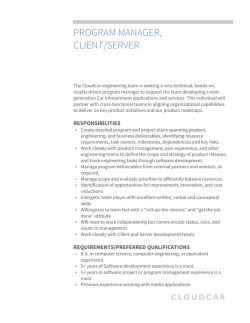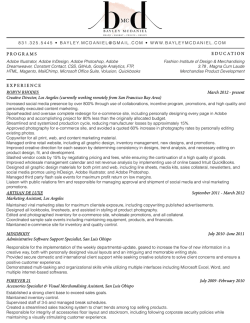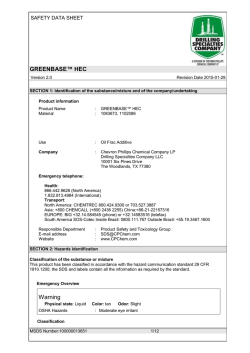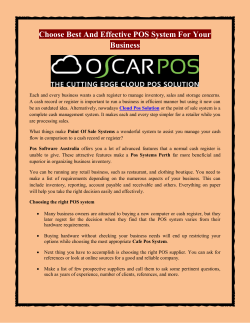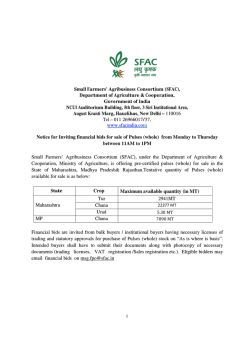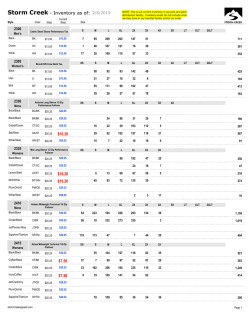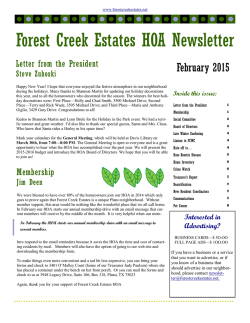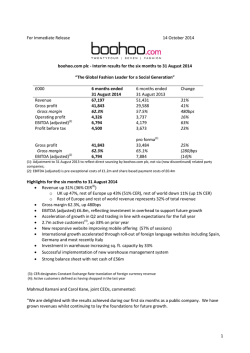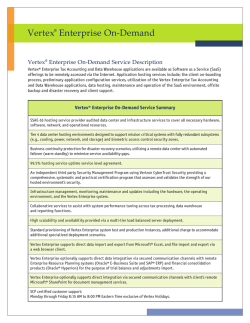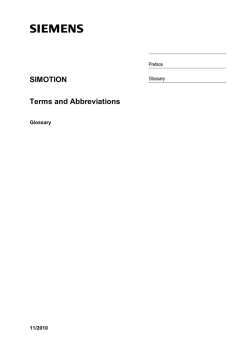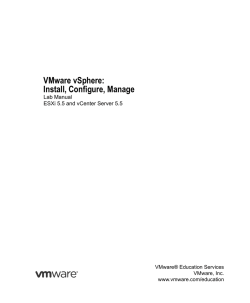
Class 3 – Scoping a Project
MIS 3504 Digital Design and Innovation Studio 3: SCOPING YOUR PROJECT Stephen Salvia Photo: Installation by Jenny Holzer, US Pavillion, Venice Biennale 1990 Documenting AS IS The Project Scope Document: What is it? Project Scope Document • Usually done before you would join project by PM but you might be asked to help • Written & graphical • The work that needs to be done, and only the work that needs to be done, to deliver the product and solution • Scope creep – an incremental expansion of the project scope as requirements not truly necessary for the solution get included • PM should do forward looking parts Project Scope Document Contents • Statement of Purpose (Problem Description) – Background of the Company or Requestor – Problems & Opportunities – Approach and Deliverables • • • • • Objectives (SMART) Risks (Business / Project) Assumptions and Constraints Stakeholders Analysis Glossary Part 1: Statement of Purpose Statement of Purpose • • • • • Carefully written in business language Short description of the organization Current environment or situation Essential problem or opportunity What will be delivered from the project and what activities will be involved • Not trying to solver the problem or opportunity at this time • Fit into three paragraphs: – General context of the organization – The current condition and essential problem or opportunity – Project approach and deliverables Part 2: Objectives Objectives • Project objectives are the business’ reasons for doing the project • They might be stated as improving: – The company’s finances – The performance of a particular process – The company’s position in the market • They should be important enough that you wouldn’t need more than 5 or 6 to justify a significant project Objectives They should be Specific Measureable Actionable Realistic Time-bound Which objective is SMART which is NOT • Put up a cool web site really quickly that will make us a lot of money • Implement a replacement accounting system by end of third quarter 2014 that will reduce bookkeeping expenses by eight percent Part 3: Risks Project Level Business Level Risk Analysis • Project Risks – potential problems that might keep the team from finishing the project – Sponsor leaves in the middle of the project • Business Risks – potential problems that might impact the mission of the business – New commerce initiative fails and creates a major loss Risk Response How could you respond to a risk? • Avoid it – change the project to eliminate the risk • Transfer it – shift the risk to someone else like a vendor • Mitigate it – reduce the probability or impact • Accept it – just live with it Risk Analysis Business or Project Risk IT expert who knows warehousing leaves company Probability Low Risk Response Accept it Impact Medium Risk Analysis (for case) Business or Project Risk Probability (Project) Warehouse employees will not be able to learn the new system Medium (Business) The new system could fail ceasing the company’s operations until the problem is resolved Low – Medium Risk Response Mitigate – Reserve time in the project schedule for employee training and offer incentives to employees to adeptly learn system. Transfer – transfer loses due to business interruption to the vendor through a hold harmless agreement or purchase business interruption insurance Impact High – 2 months delay High Part 4: Assumptions and Constraints Assumptions & Constraints • Assumption – a premise that is assumed to hold true throughout the project – The organization’s staff will remain the same throughout the project • Constraint – a limitation or restriction on proposed solutions – The organization will not change their software system. What other factors should you consider? consider: Problems + Opportunities Problems & Opportunities • Another way to work with SME’s to better understand the project • Ask them what the problems are that this project is to address • Ask them if they have any ideas about solving those problems (these are the opportunities) ID 1 Problem We are losing money on each sale Opportunity Find cheaper raw materials consider: Stakeholder Analysis consider: A Glossary Glossary • Definition of key terms that will be referenced throughout the project. • Project team members may be for various areas of the organization and may not have a clear and consistent understanding of terms outside their discipline area. – Business terminology – Technology terminology – Project terminology Individual Case Assignment: Dysfunctional Warehouse problem statement, objectives, risks, constraints and assumptions Links to documents on the MIS 3504 Blog site Case background (Dysfunctional Warehouse) Project Scope Template Dysfunctional Warehouse Case You have recently been assigned to a project that is focused on improving warehouse operations. The project sponsor, North America’s General Manager, has told you that this is her top priority. She pointed out that customer service has taken so many orders for product that isn’t available that they have had $20MM in orders cancelled by the customer when they found out that delivery would be late. The plants are unhappy because their master production schedule is interrupted about 20 times a week with rush orders. The carriers are raising rates because it takes so long to load their trucks as the warehouse tries to locate the needed product. Having the wrong inventory also costs the business as the product’s shelf life means it has to be sold at a loss if more than 6 months old and scrapped if older than 9 months. Customer orders are taken by a customer service representative using an new order system, he then checks for the availability of inventory using a separate old inventory system and places a reservation against that inventory. Customer service has no interest in changing out their new system and has told the project so. The shipping team at the warehouse prints the pick list and shipping papers from their inventory system. Warehouse personnel also record inventory as it arrives from the manufacturing sites. After orders are picked and the prepared for shipment, they are loaded onto the carriers trucks for delivery to the customer which the shipping personnel confirm in their inventory system so that the CSR’s can check if needed. When there is a pending order and no inventory, the customer service team calls the plant and asks them to make a rush order. Rush orders are delivered to the warehouse and often loaded directly onto the carrier’s trucks. Paperwork is often created manually to ensure prompt delivery. Additional Information Gathered from Initial Interviews: • Company Name is “Sealant and Adhesives Inc.”, founded in 1972 • A US based company, rapidly expanding into the global market • Privately owned company, current annual sales of 700MM, with 6.5MM in profits • Overall Inventory Record Accuracy is around 80%. • Primary clients are large home improvement chains and local hardware stores • The CEO has told the GM that she has 6 months to finish this project and get her house in order. The CEO is looking for continued improvement for another 6 months before deciding the GM’s fate • The General Manager has made this a top priority and assures all available resources under her responsibility will be made available to support this project • At this time the hurricane season is in full force and the order volume is a peak • While the project is a top priority, operation cannot be impeded by any of the recommend solutions. Assignment: Write a scope document to share with your project sponsor to ensure that you have understood the assignment correctly. Please write the following parts of that document • • • • The problem statement Up to five SMART Objectives Risks (project and business) A list of all relevant assumptions and constraints. You may use the Project Scope Template located on the Blog site. Project Scope Template: What are the major problems? 3 paragraphs: Background of the Company or Requestor Problems & Opportunities Approach and Deliverables What are the project objectives? Specific Measureable Actionable Realistic Time-bound What are the Risks Project Risks Business Risks What are the relevant assumptions and constraints?
© Copyright 2025
